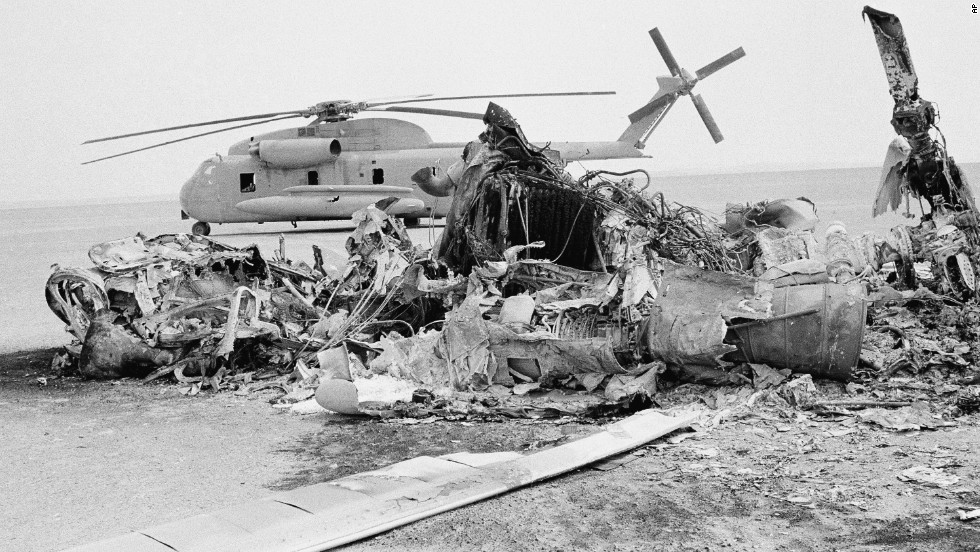


An official confirmed that Raisi and Foreign Minister Hossein Amirabdollahian narrowly escaped a helicopter crash while returning from a visit to the Iran-Azerbaijan border. The cause of the crash is still under investigation, but initial reports suggest it was due to technical difficulties. Both officials are said to be safe and unharmed, but the incident highlights the potential dangers that come with international border visits.
Iran's President and Foreign Minister Escape Helicopter Crash
Tehran - Iran's President Ebrahim Raisi and Foreign Minister Hossein Amirabdollahian narrowly escaped a helicopter crash on Saturday while returning from a visit to the Iran-Azerbaijan border, an official confirmed.
According to the official, the helicopter experienced technical difficulties, forcing it to land abruptly. Both Raisi and Amirabdollahian were unharmed in the incident, which is still under investigation.
Background
President Raisi and Foreign Minister Amirabdollahian were visiting the Iran-Azerbaijan border to inspect a new trade and economic zone between the two countries. The construction of the zone is a key part of Iran's efforts to strengthen its ties with Azerbaijan and other neighboring states.
Helicopter crashes are not uncommon in Iran, particularly in remote or mountainous areas. In 2021, a military helicopter crash killed 13 people, including several senior military officials.
Investigation and Reactions
The Iranian authorities have launched an investigation to determine the cause of the crash. Technical experts are examining the helicopter's wreckage to identify any potential malfunctions or design flaws.
Iran's Supreme Leader, Ayatollah Khamenei, expressed his relief over the escape of Raisi and Amirabdollahian. He thanked God for protecting the two officials and wished them well.
International leaders have also expressed their concern and support for Iran following the incident. The President of Azerbaijan, Ilham Aliyev, called Raisi to express his solidarity and offer assistance in the investigation.
FAQs
What caused the helicopter crash? The cause of the crash is still under investigation, but initial reports suggest it was due to technical difficulties.
Were President Raisi and Foreign Minister Amirabdollahian injured? No, both officials were unharmed in the incident.
Is this the first helicopter crash in Iran? No, helicopter crashes are not uncommon in Iran, particularly in remote or mountainous areas.
What is the significance of the Iran-Azerbaijan border visit? The visit was part of Iran's efforts to strengthen its ties with Azerbaijan and other neighboring states. The construction of a new trade and economic zone between the two countries is a key aspect of this strategy.
What is the international reaction to the crash? International leaders have expressed their concern and support for Iran following the incident. The President of Azerbaijan called Raisi to offer assistance in the investigation.

During the Emerging Science Technology and Innovation Conclave, PM Modi announced the launch of the Rs 1 lakh crore Research, Development and Innovation Fund. This fund, under the Department of Science and Technology, aims to encourage private sector investments in R&D to drive India's vision of becoming an innovation-driven nation. With this fund, India's R&D expenditure has doubled in the last decade and the country now has the world's third-largest startup ecosystem. PM Modi also highlighted how India's domestic capability has accelerated during the COVID-19 pandemic due to its successful digital public infrastructure.

A stampede at the Kasibugga Venkateswara Swamy Temple in Andhra Pradesh has left 10 dead and two injured. The temple had recently reopened and was experiencing high footfall due to a festival. Home Minister Vangalapudi Anitha has ordered a thorough investigation into the causes of the tragedy and has promised strict measures to prevent similar incidents in the future.

India and the United States have strengthened their already strong ties by signing a 10-year framework for their major defense partnership. The agreement, signed during a bilateral meeting between the two countries' defense ministers, emphasizes the importance of this partnership in maintaining a free and open Indo-Pacific region. This marks a significant step in solidifying the bond between India and the US in the defense sector.

In preparation for a major tri-service military drill, India has issued Notices to Airmen (NOTAM) for the entire northeastern region that borders China, Bhutan, Myanmar, and Bangladesh. The first set of exercises will commence in November and continue through January, signaling enhanced operational readiness for the Indian Air Force (IAF). This move is significant as the Northeast remains a sensitive theater, making up the boundary with four countries, including China. The upcoming IAF exercises aim to strengthen India's air dominance, effectively preparing for any potential challenges along the western frontier with Pakistan.

India will conduct a 10-day military exercise in Rajasthan and Gujarat involving the Army, Air Force, and Navy to showcase its operational readiness following Operation Sindoor earlier this year. The exercise, announced through a NOTAM, features advanced military technologies and emphasises the integration of speed, firepower, and precision in desert warfare conditions. It comes amidst heightened tensions with Pakistan and a renewed focus on maintaining military readiness along the border.

Jammu and Kashmir police have filed an FIR against a group of Christian missionaries in Kathua district for allegedly attempting religious conversions through financial incentives. This comes after a video surfaced online showing the missionaries being attacked and their vehicle vandalized by villagers. The incident has sparked outrage and protests from local Hindu groups, demanding action against the accused missionaries. One accused, Ravindra Singh Thela, has been arrested while the main accused, Vivek Soni, is still at large. The police have also suspended eight personnel for failing to stop the attack.

US Vice President JD Vance, who converted to Catholicism in 2019, has revealed that he hopes his Hindu-raised wife, Usha Vance, will eventually embrace Christianity. However, he clarifies that their interfaith marriage is built on mutual respect and understanding, and that Usha has complete freedom of choice in matters of faith. The couple has found a balanced way to manage their interfaith household, with their children attending a Christian school and given the choice to be baptized.

US President Donald Trump has expressed optimism about reaching a trade deal with China "pretty soon" after a meeting with Chinese President Xi Jinping in South Korea. In addition to announcing lower tariffs on Chinese imports, Trump also stated that the issue over US access to rare earths has been resolved. However, there has been no official response from Beijing and the final decision on the sale of Chinese-owned TikTok's US operations is still pending. Analysts see these developments as a breakthrough in the ongoing trade tensions between the two countries. Our correspondents provide insight on the discussions between the two leaders and speculate on why Xi may have felt confident walking into the meeting.

At the Asia-Pacific Economic Cooperation (APEC) Summit in South Korea, Chinese President Xi Jinping and US President Donald Trump met for their first in-person talks in several years. Despite past frictions, Xi called for closer cooperation between the two largest economies in the world, emphasizing the importance of being "partners and friends." Acknowledging Trump's peace efforts in the Middle East, Xi commended his contributions and praised him as a "tough negotiator." Trump also expressed optimism for a productive discussion on trade and global security.

In a historic event, Prime Minister Shri Narendra Modi addressed the Global Maritime Leaders Conclave and chaired the Global Maritime CEO Forum at India Maritime Week 2025 in Mumbai, welcoming participants from over 85 countries. With major shipping giants, startups, policymakers, and innovators in attendance, the summit showcased India's advancements in the maritime sector, such as the replacement of outdated colonial laws with modern ones and the recognition of large ships as infrastructure assets. Amidst global tensions, India stands as a symbol of strategic autonomy and inclusive growth, ready to take on a leading role in the world's rough seas.